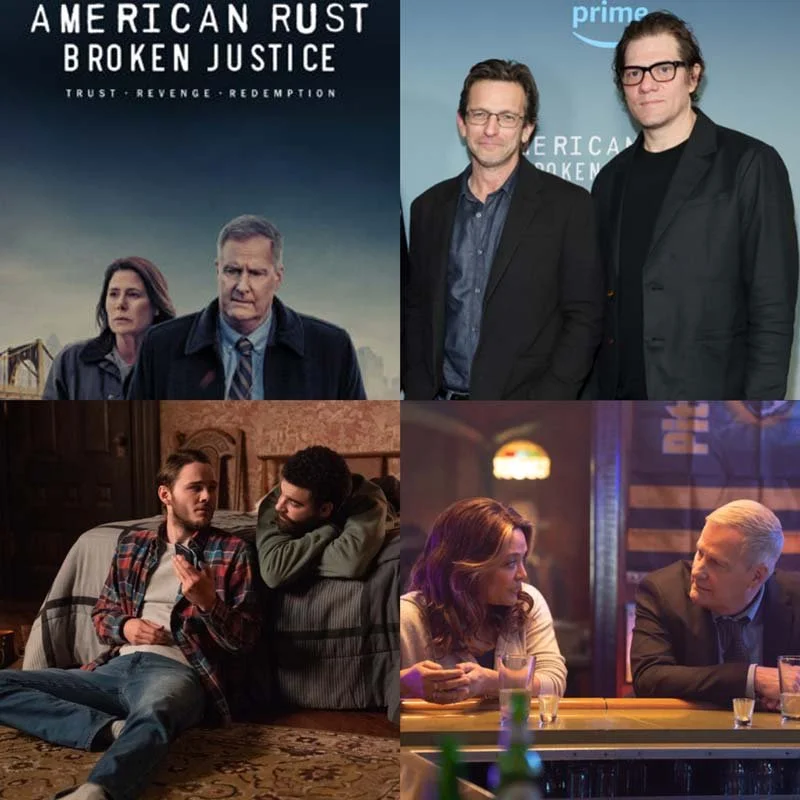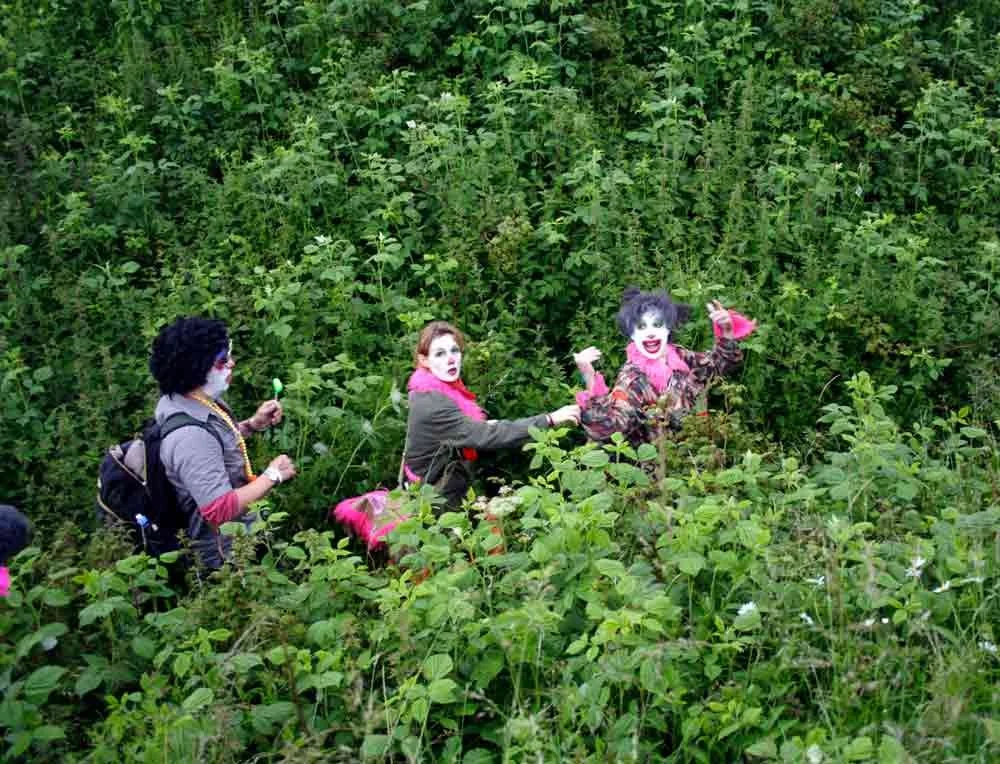Darcey Steinke is the author of the memoir Easter Everywhere (Bloomsbury 2007, A New York Times Notable book) and the novels Milk (Bloomsbury 2005), Jesus Saves (Grove/Atlantic, 1997), Suicide Blonde (Atlantic Monthly Press, 1992), and Up Through the Water (Doubleday, 1989, A New York Times Notable book.) Her latest novel, Sister Golden Hair was published by Tin House. With Rick Moody, she edited Joyful Noise: The New Testament Revisited (Little, Brown 1997). Her books have been translated into ten languages, and her nonfiction has appeared in The New York Times Magazine, The Boston Review, Vogue, Spin Magazine, Washington Post, Chicago Tribune, and The Guardian. Her web-story “Blindspot” was a part of the 2000 Whitney Biennial. She has been both a Henry Hoyns and a Stegner Fellow and Writer-in-Residence at the University of Mississippi, and has taught at the Columbia University School of the Arts, Barnard, The American University of Paris, and Princeton.
This is an abridgment of 12,000-word interview. The full interview will be published across a network of university and national literary magazines in the coming months.
THE CREATIVE PROCESS
In your fiction you use an every day situation like commuting home from JFK airport to touch on spirituality in America.
DARCEY STEINKE
I feel like anybody can make a church or a garden spiritual, but for me the more interesting thing is to see if you can make holy or spiritual things that are just very ordinary. I also think that’s kind of the truth. I think if God exists it’s everywhere, not just in a church. But in an ugly spot. In a spot where atrocities happen. There’s all sorts of places that are holy, not just the ones that are defined that way by the culture. That’s always been a part of my work. From the very beginning.
THE CREATIVE PROCESS
The sense from abroad is that America is kind of like a teenager, someone who has grown up very quickly, too fast, maybe developed in all sorts of awkward ways––and in Sister Golden Hair you really captured that time in the 70s: the awkwardness and the grace.
STEINKE
Well, thanks so much. I worked really hard to make the 70s real. Listened to endless records that came out then. “Sister Golden Hair” is a song by America. I looked up the bestseller lists and I read those books cause I just didn’t want to do the way it looked. I also wanted to do: What were people thinking? What was life really like? I wanted to do my version of the 70s not the general version of the 70s that you see replicated. Cause I was a little girl in the 70s.
THE CREATIVE PROCESS
So you’re Jesse? (the main character)
STEINKE
A little bit. Not completely.
THE CREATIVE PROCESS
Are you Sheila?
STEINKE
No, no. I’m a little bit like all the girls, OK. I feel like when you were a little girl in the 70s there’s a lot of wonder about it. There’s the tacky clothes and all that, but there’s something kind of sad about it. There was something really amazing about it, too. So I wanted to capture that, those contradictions in the book.
THE CREATIVE PROCESS
Looking back – although it was in the middle of the sexual revolution – in a way the 70s was quite innocent.
STEINKE
That’s the thing after I wrote the book. I had a strong feeling of how much freedom and free time we had as children. Nobody was checking their phone all the time. It was wild in a way. I think you’re really, really right. The idea of unstructured time. I actually felt when I was working on it a certain nostalgia for that. Even though this was a time I was unhappy. My family was unhappy. But writing it, I was like Oh, wow, this was the time I really became who I am as a person. When I had a lot of freedom, a lot of privacy. I wasn’t on a computer all the time. That was an interesting thing to discover about the 70s.
THE CREATIVE PROCESS
In a way you’ve hit the jackpot in terms of material from your early life. You’re a minister’s daughter. So you had that religious education and you grew up in the 70s, and have this rock ‘n’ roll background. You’ve a lot to draw from that’s really interesting.
STEINKE
I’ve gotten a lot out of being a pastor’s daughter. In a way it’s done me really well. Very formative.
THE CREATIVE PROCESS
Your books show us a different angle, it’s not straightforward.
STEINKE
Just the idea of the religious training that I had in the context with all the other things that I am. My interest in a more open spirituality, my interest in music and rock ‘n’ roll, the avant-garde movements. Everything. It’s kind of a weird. I think it’s rare for people to have the kind of religious training I had nowadays. Grew up in a church. At the time I didn’t like it, but I think it served me very well knowing a lot about the Bible. The King James Bible is so beautiful. The holiness of the book, that more than any of the other trappings. The idea of the book being the most important thing.
THE CREATIVE PROCESS
How do you approach teaching creative writing?
STEINKE
Mostly I am looking for the hotspots in the text, so I can say this is really good. It might only be a paragraph, but ‘this is what you should be dilating’. In my own work I try for a sense of immediacy and I want to help my students get connected to what they are the most passionate about.
THE CREATIVE PROCESS
You’re in a band, Ruffian. You also interviewed Kurt Cobain. He became a friend of yours.
STEINKE
My first husband was a rock musician. We knew a lot of bands and people in that world. We also knew a lot of rock critics. So when SPIN asked me to do a cover story it was very exciting. He wouldn’t talk to a regular journalist. He wanted to talk to a novelist because he was kind of burned by the Vanity Fair story. So I was very happy to be chosen. It was really kind of amazing. I didn’t really know him, although I had seen him around the scene years before. He was a very lovely person. The record is incredible. It just sounded different than everything else. Was super-exciting to hear that cause I remember at the time there being just a lot of bad, big hair, guitar rock and then Nirvana was a whole new sound. I found him very, like you would imagine, vulnerable. Very sweet. Extremely paranoid. Very smart. Great vocabulary. Different than you would think. Kind of freaky, I would say. A little freaky guy, you know what I mean? But like a very deep lovely person. That was an amazing experience. Spent two days interviewing him and then I think within three or four months he was dead.
THE CREATIVE PROCESS
You’ve covered a lot of extreme or iconic people. The Waco siege. Monica Lewinsky.
STEINKE
I really enjoyed writing the Waco story. It was so terrible because people actually died, but it was a perfect story for me in that I know a lot about religion. I’m very interested in cults and religious extremism. I’m hoping to write a novel about a woman who starts her own religion. I think that in the States, and maybe everywhere, community is so fragmented I can understand why people would want to – I don’t want to join a cult – but I kind of understand why somebody would. Someone who was lonely and didn’t have a social network. Why wouldn’t you want to be in a community. So I have a lot of sympathy for people who do that. I don’t think they’re crazy. So I was able to write a story that had more the idea of people searching for community. And look what happens. Look what happens because we’re so disconnected.
Selected French translations:
THE CREATIVE PROCESS
Comment abordez-vous l’enseignement de l’écriture créative ?
STEINKE
Je cherche principalement les points chauds du texte. Ca ne peut être qu’un seul paragraphe, mais « c’est cela que vous devriez creuser ». Dans mon propre travail, j’essaye de décrire un sentiment d’immédiateté, et je veux aider mes étudiants à trouver ce qui les passionnent le plus.
THE CREATIVE PROCESS
Vous êtes dans un groupe, Ruffan. Vous avez aussi interviewé Kurt Cobain. Vous êtes devenus amis.
STEINKE
Mon premier mari était un rockeur. Nous connaissions beaucoup de groupes et de gens dans ce monde. Nous connaissions aussi beaucoup de critiques de rock. Donc quand SPIN m’a demandé de faire un article, j’étais très emballée. Il ne voulait pas parler à un journaliste ordinaire. Il voulait parler à un romancier, parce qu’il a été échaudé par l’histoire avec Vanity Fair. Donc j’étais très contente d’être choisie. C’était vraiment extraordinaire. Je ne le connaissais pas vraiment, même si je l’avais vu autour de la scène des années auparavant. C’est vraiment une personne adorable. Le disque est incroyable. Il est complètement différent de tout le reste. C’était très excitant à entendre, parce qu’à l’époque il y avait beaucoup de gros chevelus, de guitares électriques, et puis Nirvana était un son complètement nouveau. Je l’ai trouvé, comme vous pouvez l’imaginer, vulnérable. Très gentil. Extrêmement paranoïaque. Très intelligent. Avec un vocabulaire très riche. Différent de ce qu’on pourrait penser. Un peu bizarre, je dirais. Un petit mec bizarre, vous voyez ce que je veux dire ? Mais aussi une personne très profonde et adorable. C’était une expérience extraordinaire. J’ai passé deux jours à l’interviewer, et je pense que trois ou quatre mois après, il était mort.
THE CREATIVE PROCESS
Dans votre fiction, vous utilisez les expériences de tous les jours, comme rentrer chez soi de JFK (aéroport de New-York), pour toucher la spiritualité de l’Amérique.
STEINKE
Je pense que n’importe qui peut rendre spirituel un jardin ou une église, mais pour moi, ce qui est plus intéressant, c’est de voir si on peut rendre spirituelles ou sacrées des choses au départ très ordinaires. Je pense aussi que c’est en quelque sorte la vérité. Je pense que si Dieu existe, il est partout, pas simplement dans une église, mais dans un endroit moche. Dans un endroit où se passent des atrocités. Il y a toutes sortes de lieux qui sont sacrés, pas seulement ceux qui sont définis comme tels par la culture. Cela a toujours fait partie de mon travail. Depuis le tout début.
traduit de l’anglais par Lou Churin
Mia Funk is an artist, interviewer and founder of The Creative Process.



















































